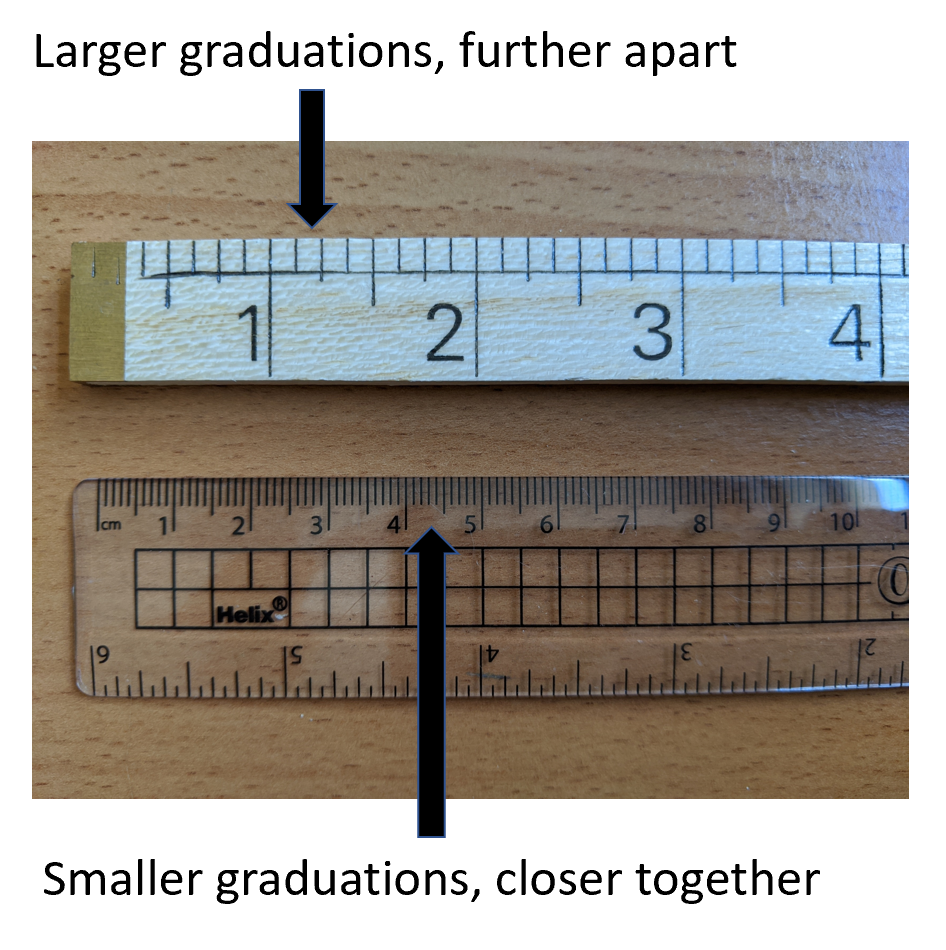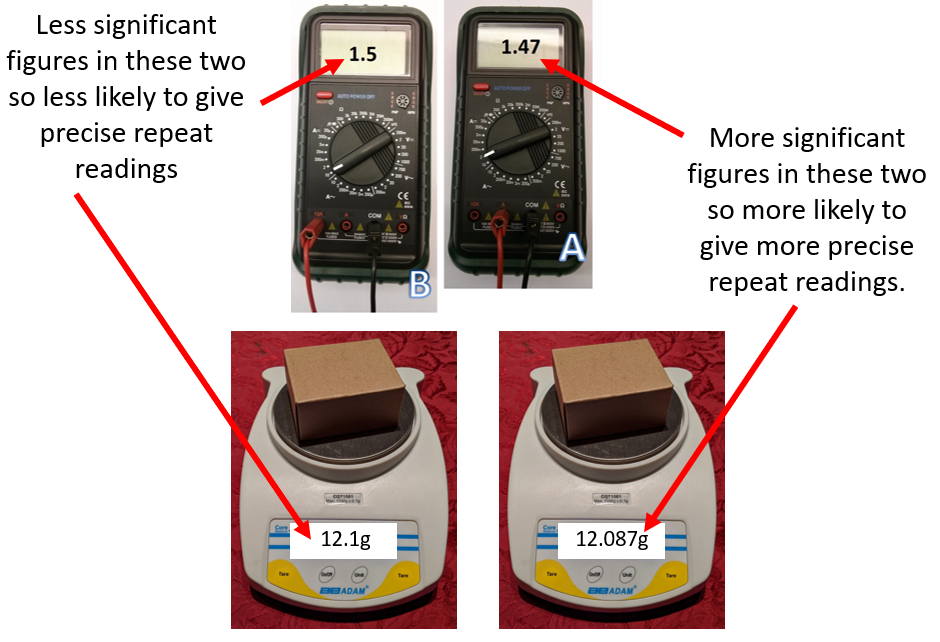All Textbook Topics - Measurement - Precision introduction - Smaller increments/graduations on a measuring tool often gives higher precision
Smaller increments/graduations on a measuring tool often gives higher precision
When taking measurements using a measuring tool, you will record readings from a scale.
The graduations on the scale will never be exact, and you will choose the graduation that is closest to the true value of the measurement as the recorded measured value.
If there are less graduations and they are far apart, then when you take the repeat readings, they could be quite far apart.
If there are more graduation and they are closer together, then when you take the repeat readings, they are more likely to be close together.
This means that if there is a smaller gap between the graduations, the results are more likely to have a higher level of precision.

This does not just apply to reading off a scale. Smaller graduations mean you can read smaller amounts, like reading to extra significant figures.
The diagram below shows two examples of digital measuring tools, one of which is reading to more significant figures and so is more likely to give precise repeat readings.

All of our textbook pages have associated quizzes. Register for free to access them.
Register For Free